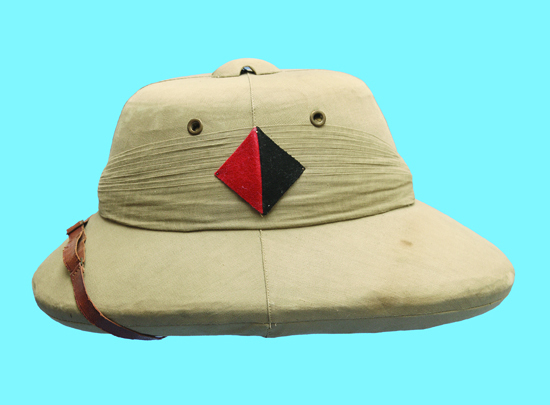
This Khaki Solar Pith Hat is dated 1937 and attributed to Lt. G. C. Moor R.A. It was manufactured by the Peninsular Hat Company of Calcutta. (Author’s collection)
The Khaki Solar Pith Hat was the British Army designation of this civilian sola topee which was used in a semi-official capacity in India and Burma probably from the late 1890s. It lasted, in army use, at least until the end of the Second World War.
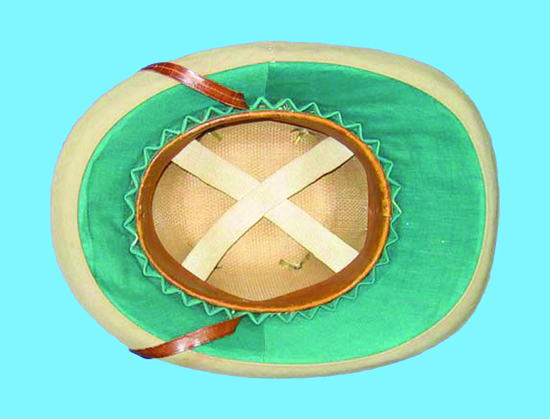
The interior of a Khaki Solar Pith Hat. Note the 1 inch cross tapes which sat on the wearer’s head and the bent tabs which secured the ventilation eyelets. (Author’s collection)
This hat would appear to be a variant of the Cawnpore Tent Club Hat made so popular by the visit of the Prince of Wales, later King Edward VII, to India in 1875/6 and, indeed, it is quite difficult to say which is which from an external view only, although the more expensive Cawnpores were distinguished by their quilted cover. Both hats were made entirely of sola pith – from the flowering plant Aeschynomene asper or other species of the Fabaceae family – and the corruption of sola to solar is easy to understand as all such hats/helmets were so often called “sun helmets.”
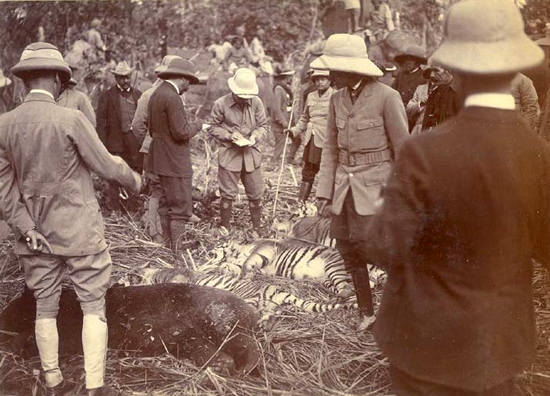
Cawnpore Tent Club Hats being worn on a tiger hunt. Note the varying sizes and the piped puggaree far left.
The Khaki Solar Pith Hat was used in conjunction with the Foreign Service helmet initially for “fatigue” duties to preserve the more expensive cork Colonial Pattern and later Wolseley Pattern helmets but quite quickly became the “campaign” preferred headdress.
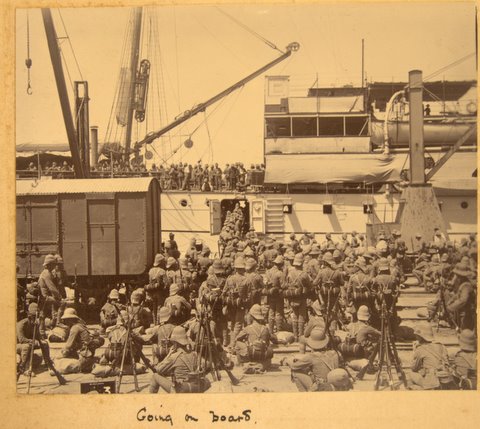
An interesting photo of troops embarking, in India c1902, which shows the Khaki Solar Pith Hat being worn by some soldiers with their Colonial pattern helmet strapped across their backs.
The KSPH was made entirely of sola pith with a drill cotton cover and in addition to the ventilation provided between the headband and shell could have eyelets, two per side, to provide extra airflow. The top ventilator button was often a “dummy” in the sense that no hole penetrated the shell beneath that button.
The Dress Regulations (India) 1931 stated that officers would wear the “pith hats of universal pattern” rather than the Wolseley pattern
(a) When British other ranks are authorized by competent authority to wear pith hats.
(b) Officer instructors and students of the Royal Tank School when on training parades which necessitate work inside a mechanically propelled vehicle.
(c) Officer students at the Equitation School.
(d) British officers of the Indian army may wear the service pattern pith hat, or Cawnpore Tent Club pattern (with quilted cover and no pagri), on all parades and duties, other than ceremonial parades.
The Wolseley helmet was officially replaced by the KSPH by Army Council Instruction (ACI) 284, dated 13th July 1938, for officers although Wolseleys and Cawnpore Tent Club Hats already in possession were allowed to be worn up to the 31st December 1938. ACI 415, of the week ending 28th September 1938, replaced the Wolseley with the KSPH for all ranks serving in Burma.
Stuart Bates

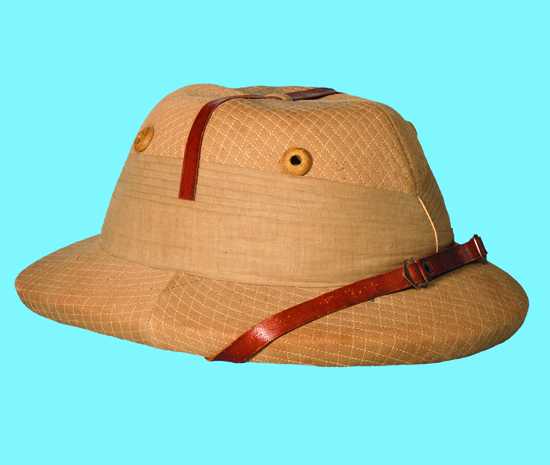
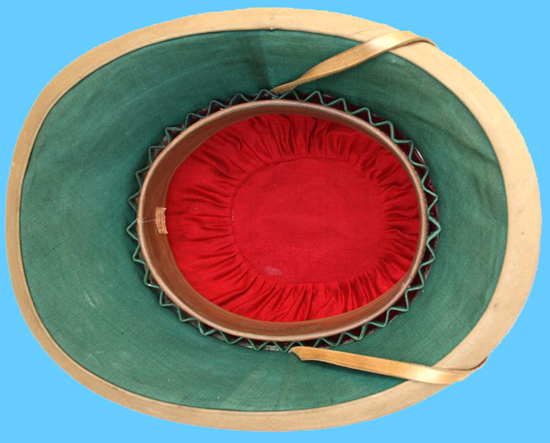
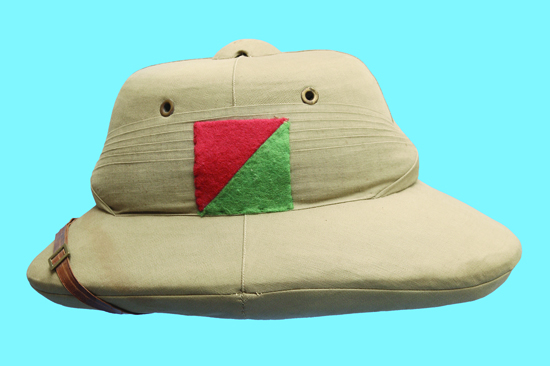
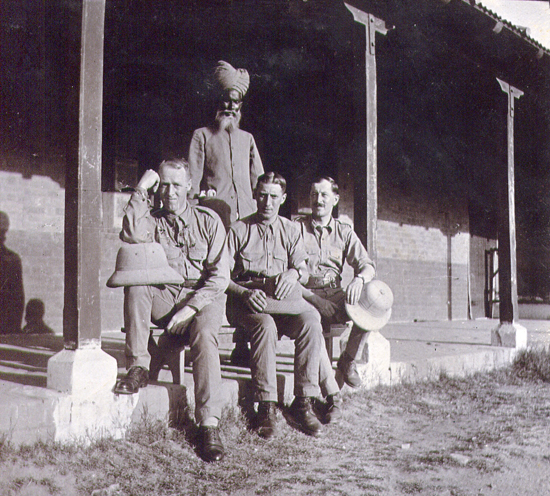
Another interesting piece on what initially appears a very simple subject such as pith helmets. But is really such a diverse and interesting piece of headwear. Keep up the very informative articles.
Pingback: British pith helmet at War relics forum
in saudi arabia where i can get khaki hat,i am going to celebrate my 60th birth day,i was born in lahore pakistan 21st setember 1952,in my child hood i was using this hat to go school on foot about 1.5 kilometer,.. regard
Hello Sarfraz,
I bet you wish you still had that hat but I suppose that it is just history now.
Regards,
Stuart
Pingback: Khaki Sola Pith of the XII Army | Military Sun Helmets
Pingback: The Bombay Bowler | Military Sun Helmets
I came across your website while searching for a sola hat to buy for my son. He has never seen one. And I don’t have one anymore. My father, uncle and most men in my father’s generation wore a sola hat in Pakistan while dressed in western attire (I have seen people wearing the sola with Pakistani costume too). During my teen years in the late 60s, I too owned one and so did my three brothers and numerous cousins. There were sola hat shops in most Pakistani cities and all hats were handmade. In the early 1970s, I met a sola hat-maker who was unemployed. His being without a job could perhaps be attributed to fallen demand for the hat. At any rate, I do not remember seeing it being worn around that time. I certainly lost mine by then. My father took to wearing felt hats. The sola hat vanished before I realized it had.